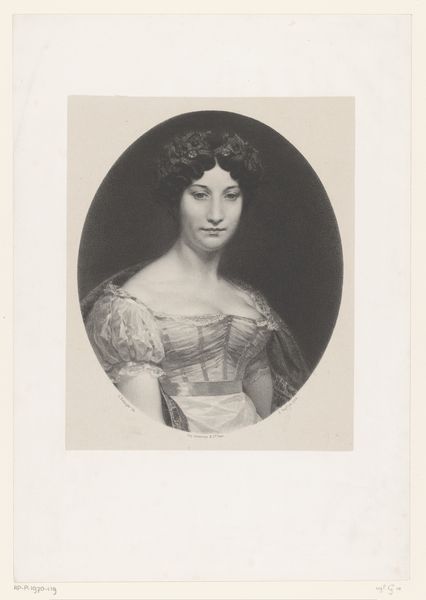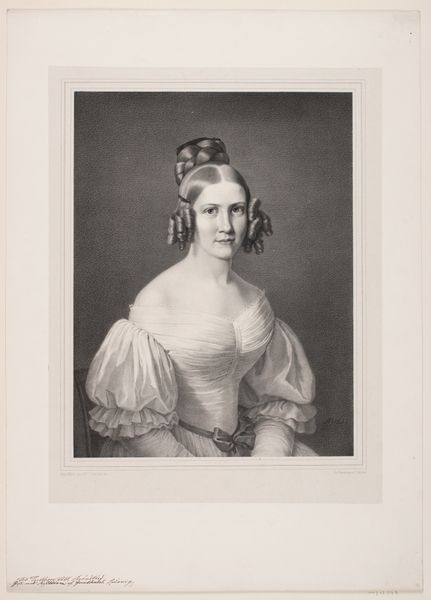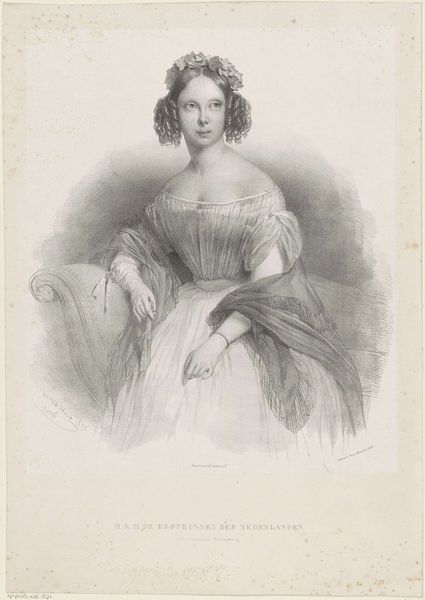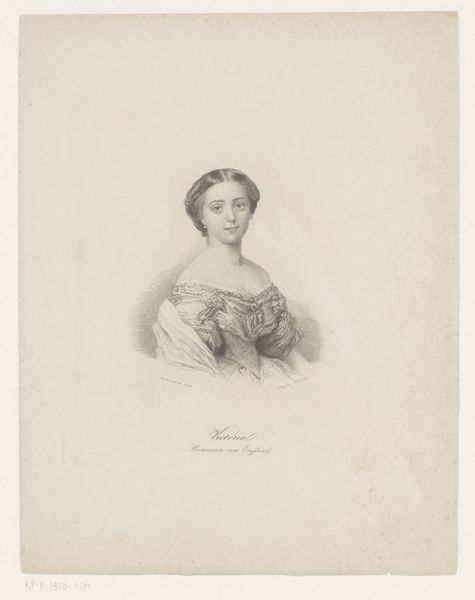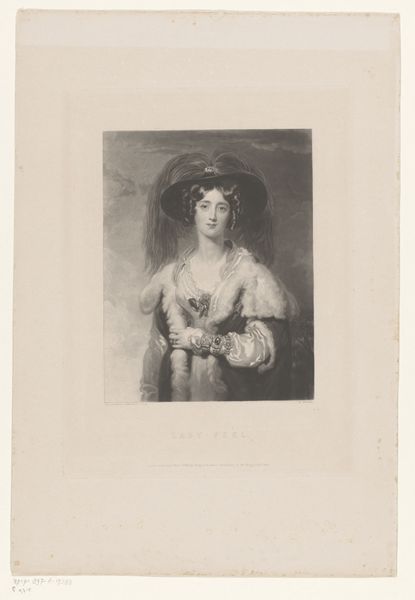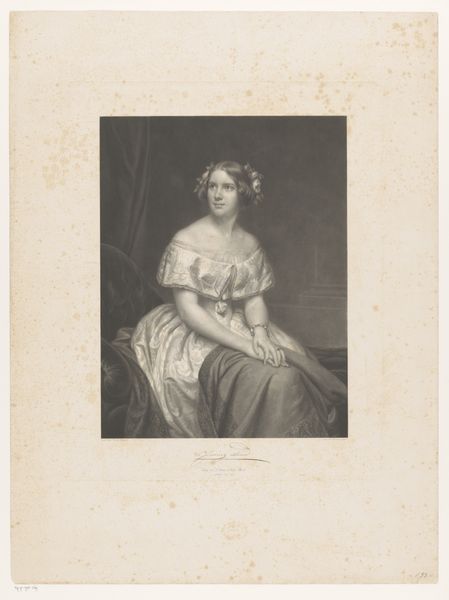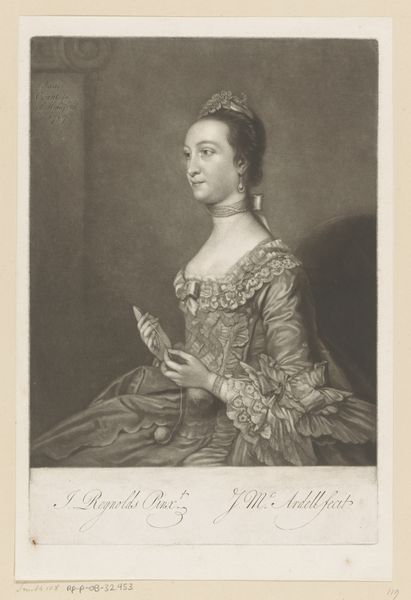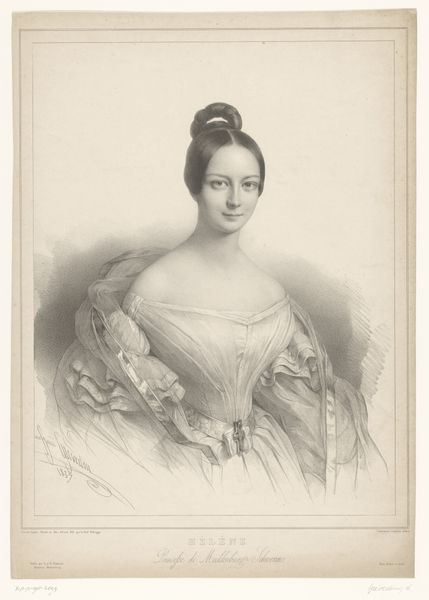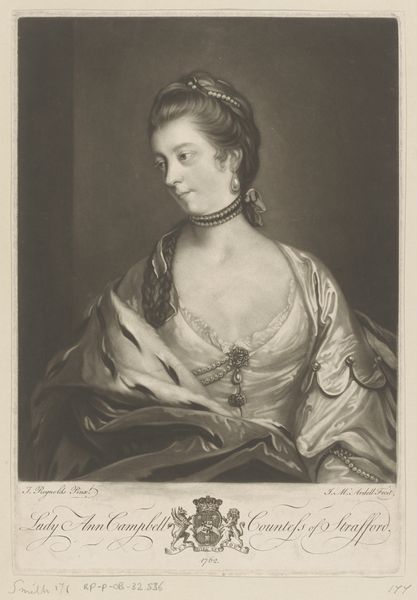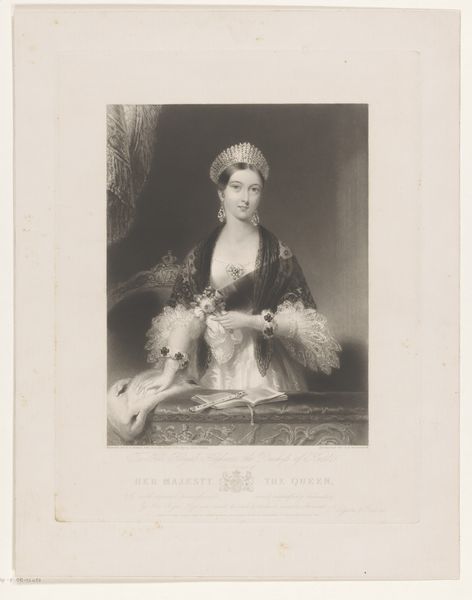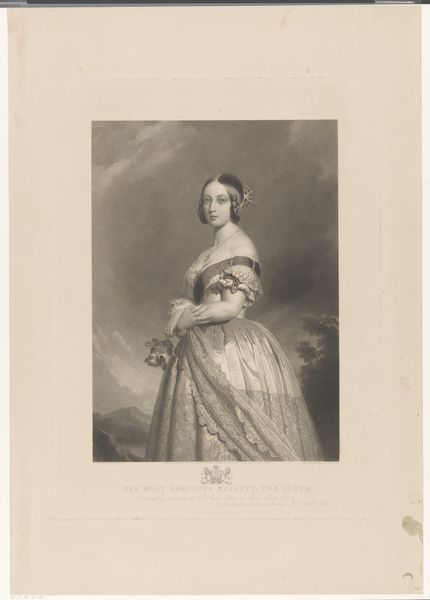
lithograph, print
#
portrait
#
lithograph
# print
#
romanticism
#
19th century
Dimensions: height 448 mm, width 339 mm
Copyright: Rijks Museum: Open Domain
Curator: This is “Young Woman at a Table with an Album of Prints,” an early- to mid-19th century lithograph, now residing at the Rijksmuseum. It exemplifies portraiture from the Romantic era. Editor: She looks incredibly bored. I mean, the voluminous sleeves, the tightly coiled hair—it's all so…restricted. It has a rather melancholic feel to it, actually. Curator: The Romantic movement frequently utilized melancholy, it was quite popular. It's interesting to consider how this piece engages with ideas of femininity, domesticity and the commodification of images through print culture. This print would have circulated quite widely, offering a readily accessible depiction of idealized womanhood. Editor: True, it's mass-produced! A key point. A lithograph allows for easier replication and dissemination compared to painting or sculpture, bringing art to a wider, potentially middle-class, audience. What inks and papers would be accessible to facilitate broader viewership? That in itself affects its socio-cultural impact! Curator: Precisely. Consider also how the album itself functions within this image, almost a "meta" comment on the consumption and collection of visual art at the time. Owning a print album became a symbol of wealth and good taste. The sitter is almost flaunting an active participation within visual culture, it indicates access and, further, power. Editor: The album of prints is interesting: whose labor goes into creating such a thing, and to what audience is this object primarily directed? Is it mostly an accessory signifying status or active engagement with art for her specifically? I guess she looks less bored than trapped; there is no getting out from such a constructed tableau, as beautiful as it is. Curator: Right, even in Romanticism, that emphasis is essential when looking at institutional display – a push and pull that reveals shifting aesthetic and cultural boundaries and access for future populations to comprehend such dynamics. Editor: Indeed! It encourages me to look closer, question the means of its reproduction, and appreciate the art historical setting which helps inform the reading. Curator: It's interesting how an examination of the material and historical context helps nuance one's aesthetic experience with the artwork.
Comments
No comments
Be the first to comment and join the conversation on the ultimate creative platform.
